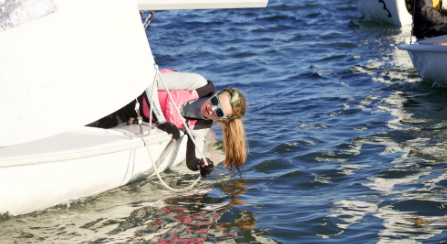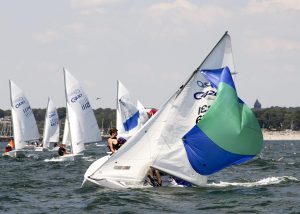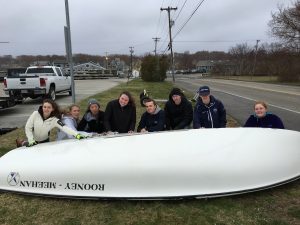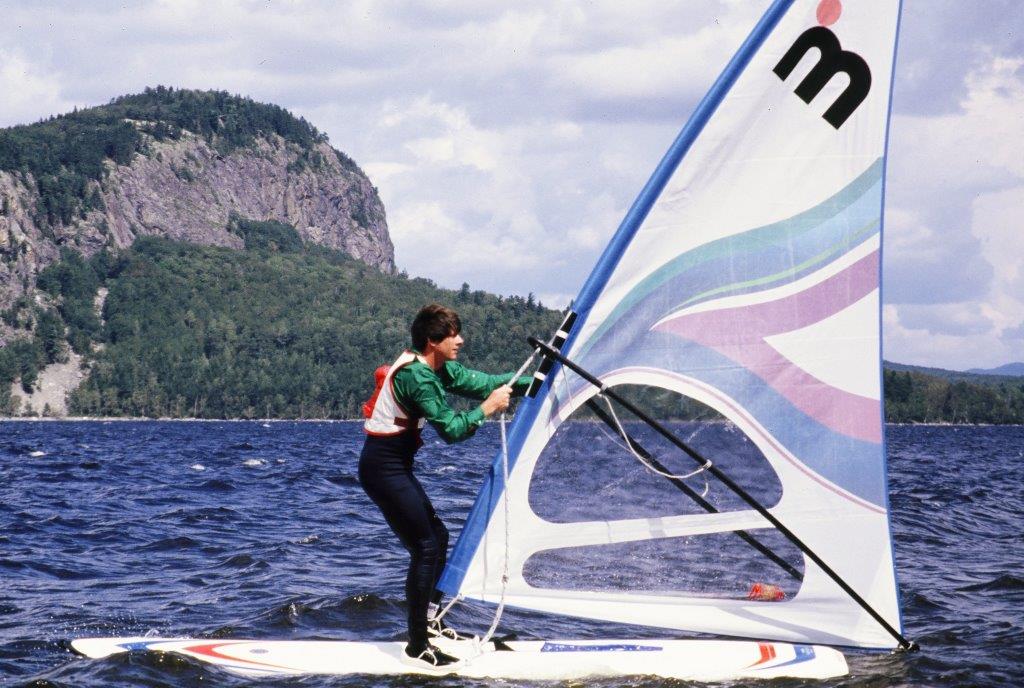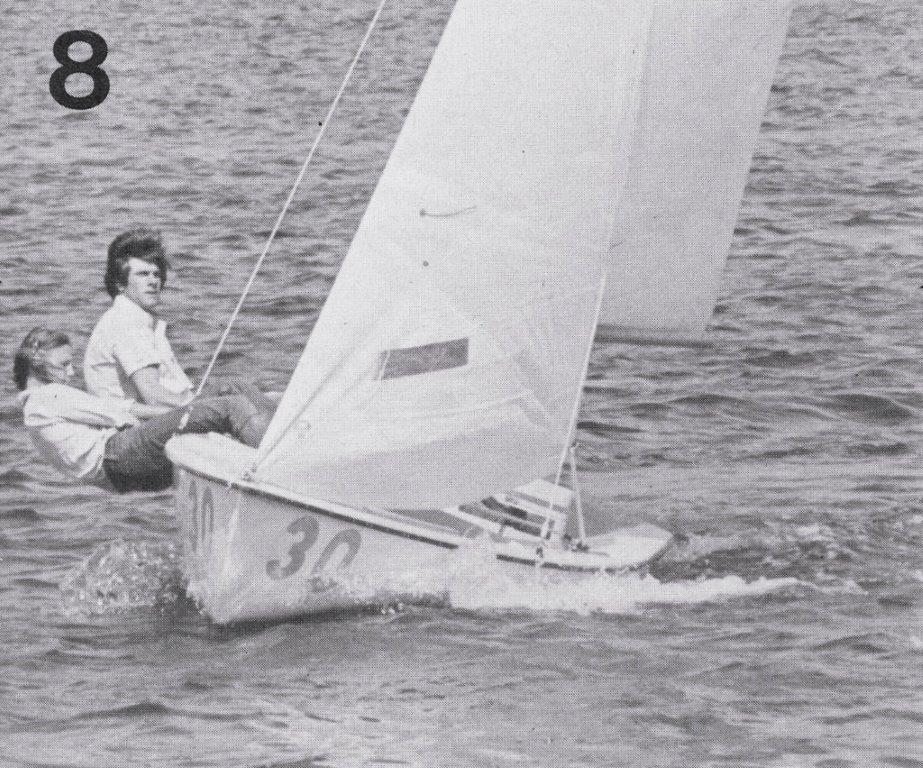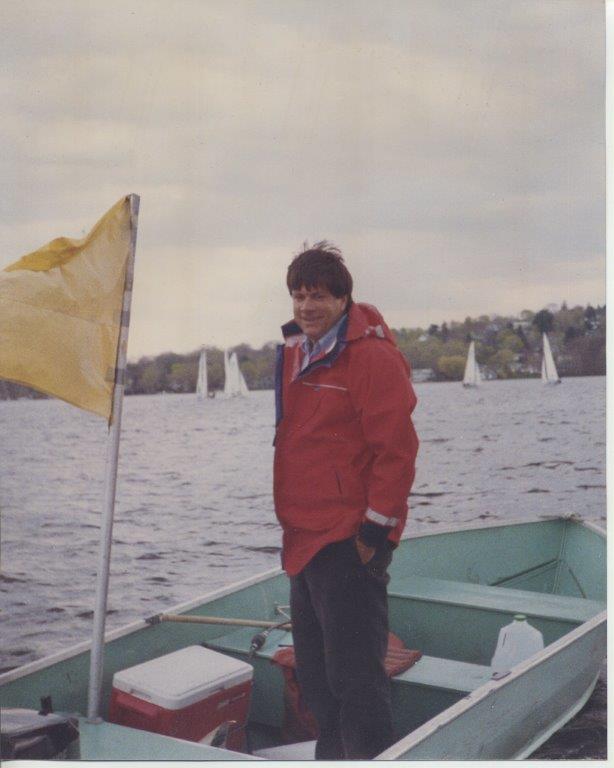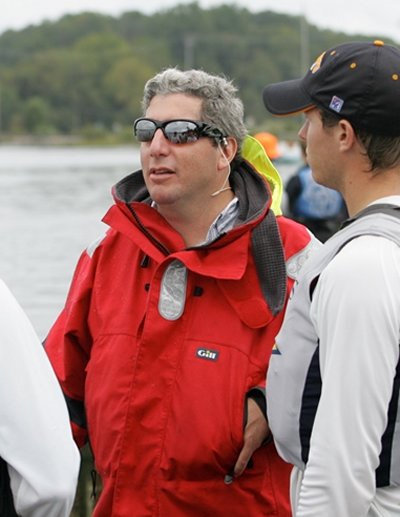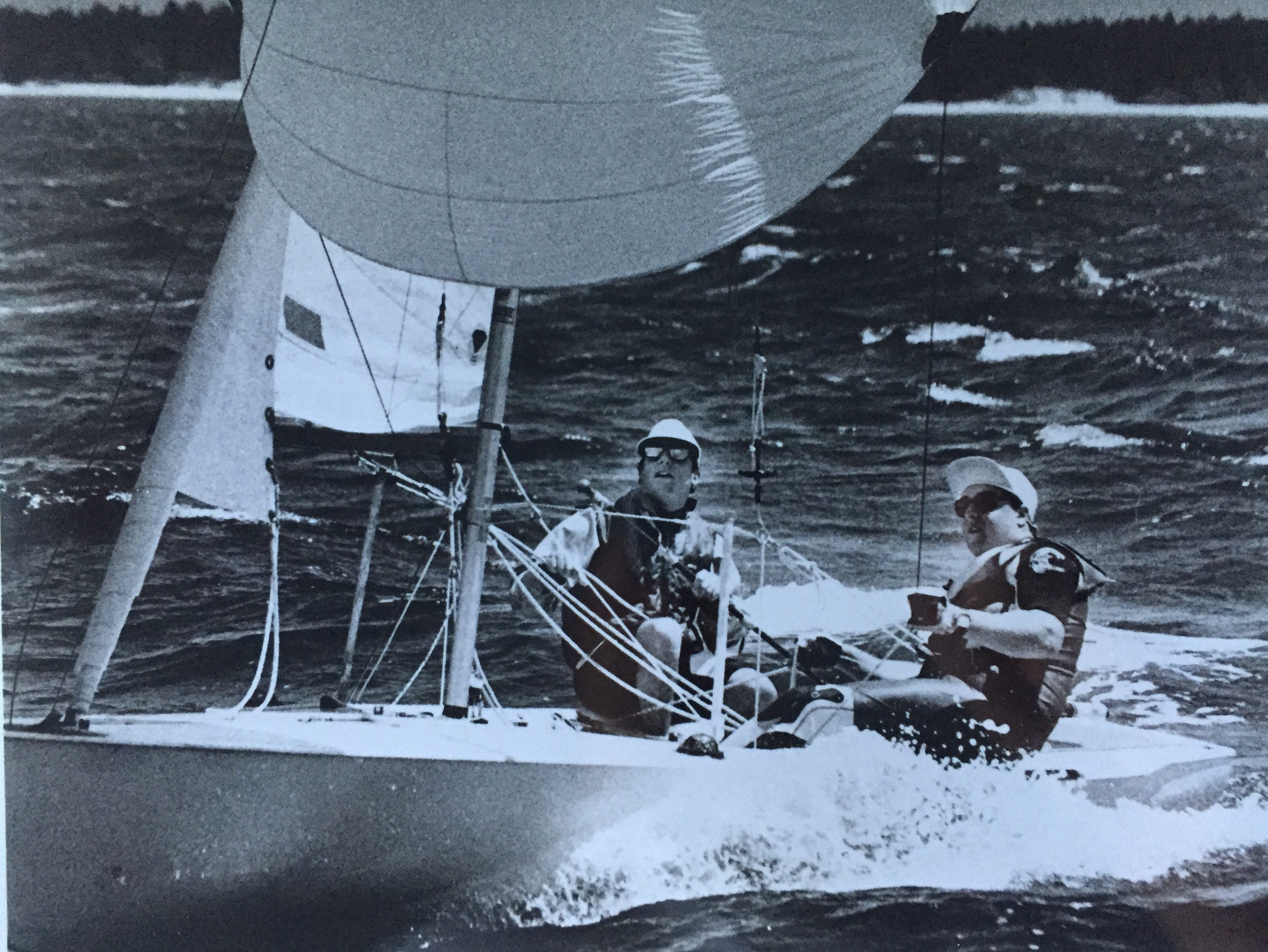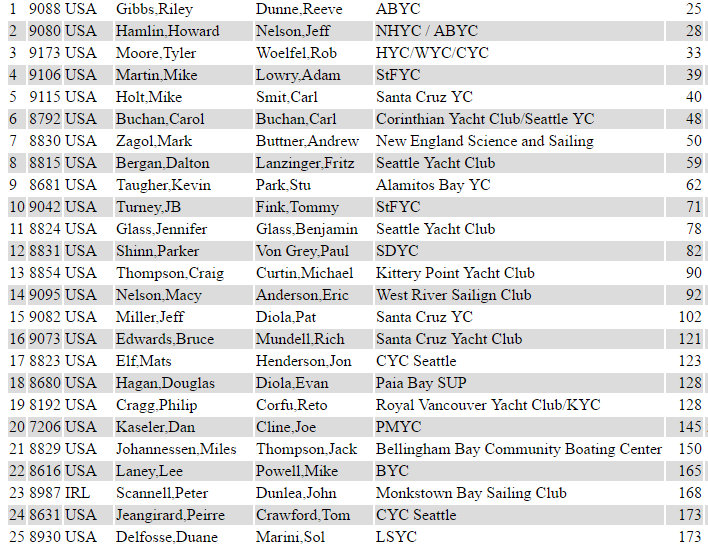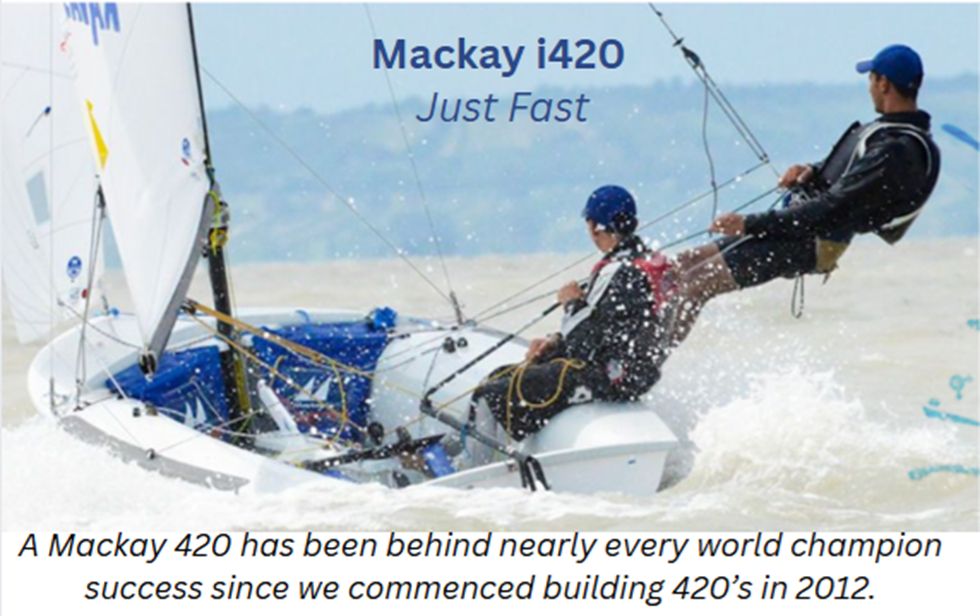Sail1Design is pleased to announce the winner of this year’s KO Sailing High School Team of the Year Award: St. George’s School. Among many nominations it came down to three finalists: Newport Harbor, Point Loma, and St. George’s.
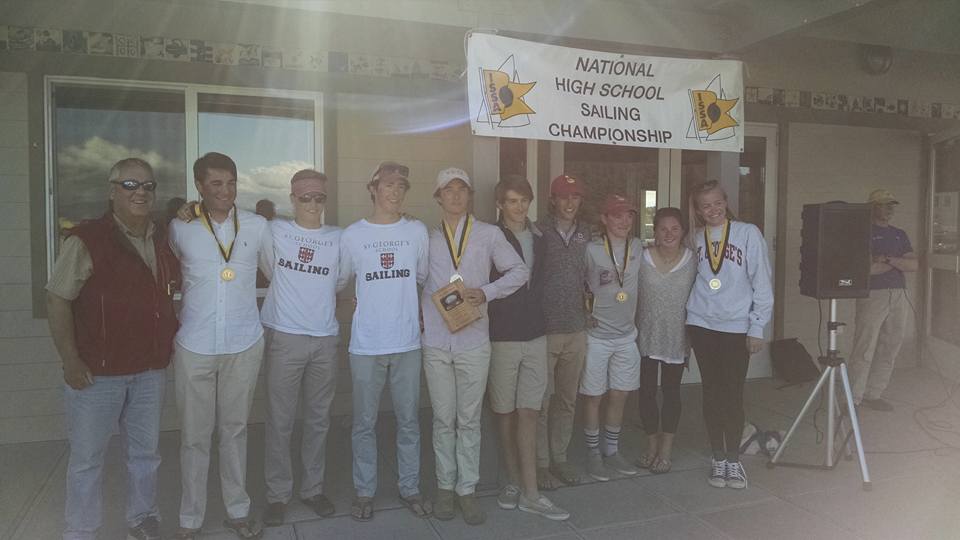
with a 22-0-1 regular season record, and the JV team going 11-1.
The Varsity team continued their history of representing NESSA at both the Mallory and Baker regattas. The team finished 6th at Mallory, and capped an incredibly successful NESSA season with their third win in a row of the New England Team Race Championships. Finishing off the year was a trip to Anacortes, WA for the Baker Trophy where the team went undefeated, winning the event with an impressive 11-0 record to become National Champions.
Unlike many of the other HS sailing programs, SG does not offer sailing in the fall season. Yet SG sophomore John Kirkpatrick finished 2nd at the New England Single-Handed Championships and represented St. George’s at the Cressy finals in the Full Rig.
NESSA also supports a Women’s Championship, known as the Herreshoff Regatta. This year, the SG women won their regional qualifier with a sophomore and a freshman skipper and went on to finish 4th at the finals. This same team later represented SG at the Rhode Island State Championships, winning B Division and finishing 3rd overall.
Challenging early season conditions in Newport in March and early April make this team work hard six and sometimes seven days a week in the most miserable weather, and yet I rarely heard a complaint. Instead, the regular reports were of how much learning was going on each day due to the strength of the group as a whole, and the continued guidance and watchful eye of Coach Williams. While the team has been lucky to have several standout sailors over the years, it is the combined strength of the team as a whole and the
incredible depth of the group that has allowed its continued success.
Sail1Design supports high school sailing, because it is where future great one-design sailors, in may cases, are made. We are proud, with the help of KO Sailing, to present this award annually to the top high school sailing team in the country. Our panel of judges looks at the entire season of district events, and of course, the Mallory and Baker National Championship results. To win this award, at a minimum, the team must qualify for at least one of these events. We also look for participation in the Singhlended Cressy National championship in the fall. Finally, we encourage written nomination submissions. This award is presented annually, in June, after the preceding year’s full high school sailing season.
Says Mark McNamara, president of KO Sailing, “KO sailing is a major supporter for competitive sailors between the ages of 8 and 18, helping them to compete at the highest level. To us, the High School Team of the year award is a perfect way to recognize those teams for their success and achievements in their respective elements. There is a great synergy between what KO Sailing is doing on the ground, and at events, in support of what these recipients have achieved. This program is just a great way for the country to recognize those sailors as they grow. Sail 1 Design, with their expertise and as the information resource for all things one design, is the only team to work with.”
Blog
New England Youth Sailing Venue Scouting Report
Sail1Design would like to welcome new High School Reporter Paige Hoffman to our team, as our Northeast High School Sailing Airwaves Reporter. Paige started sailing at age ten at Duxbury Bay Maritime school. By age twelve, she was competing in Optis and transitioned to 420 sailing when she was fourteen, becoming a member of the Duxbury High School sailing team as a freshman in high school and racing through club programs at Duxbury Bay Maritime school in the fall and summer seasons. In the summer, she works as a Junior Sailing Instructor at Duxbury Bay Maritime school, teaching younger sailors the fundamentals of sailing. In 2016, she helped her team win the Mass Bay League Team Race Championship and was named co-captain of her team for the 2017 spring season.
With much of high school and college sailing concentrated in New England, there are significant number venues in the Northeast hosting regattas throughout the spring season. In this article, we will take a closer look at some of the venues commonly used for high school sailing, and what to expect when racing there.
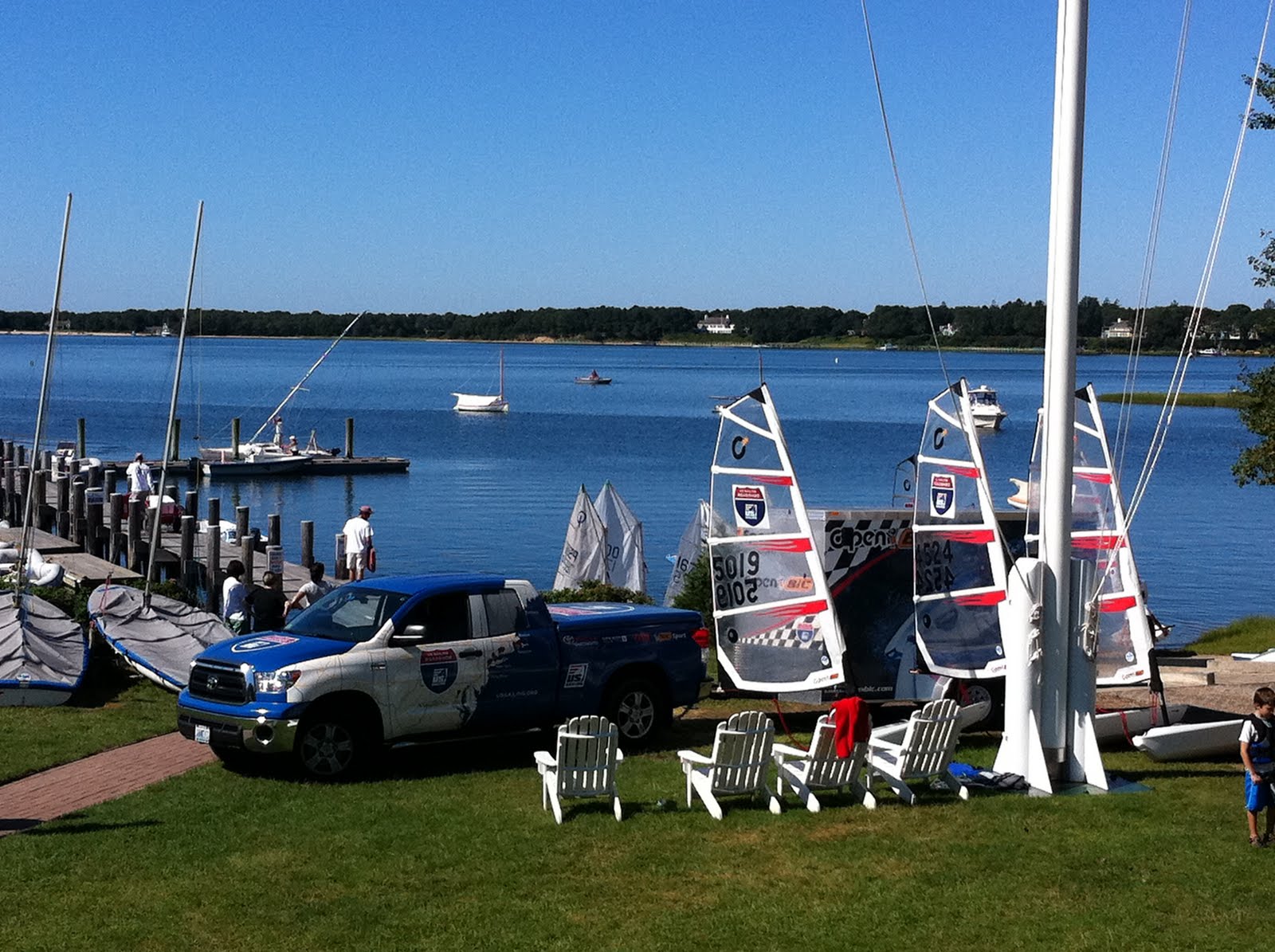
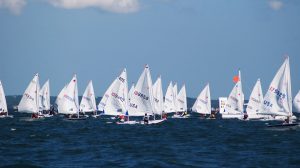
Another venue that many high school or junior sailors will race at is Scituate. Scituate Junior Regatta, which is hosted by Scituate Harbor Yacht Club, has run for 28 years, and is a very popular racing destination for summer sailors all over the region. In the spring season, Scituate harbor is an ideal destination for sailing with the absence of summer moorings. The range of wind in Scituate is very sporadic. The current in the channel can be a significant factor when racing, causing the current and wind to move in opposing directions.
Some Scituate sailors having fun in the preseason
If there were one thing to emphasize about Duxbury in the spring, it would be wind. Duxbury is known for being very windy in the spring, so be prepared for lots of hiking and bailing when sailing there. Current is a significant 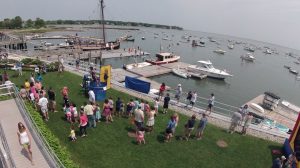
The Charles River is perhaps the most fascinating place to sail in high school. Most high school sailors spend the majority of their sailing time in lakes or bays in suburban areas, lacking the distractions of a busy city venue. Sailors on the Charles River are exposed to an extreme variety of wind conditions. The wind generally blows from the west around 10-20 knots. However, some days provide more challenging conditions. The Charles river has its fair share of extremely light days and very windy days, there tend to be significant shifts every race. Northerlies and southerlies offer sailors especially shifty conditions because of city wind tunnels. In general, sailing on the Charles gives a sailor practice in both light and heavy wind while tuning them to react quickly to shifts and puffs. If you sail at Community 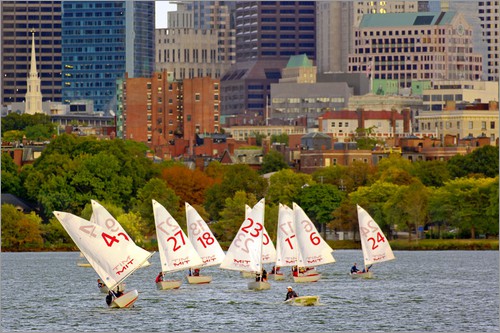
These are just a few of the many, many places that you as a high school sailor will race at. It is important to be open minded about rigging and tuning wherever you sail, and to get a feel for the conditions on the water. With much of high school sailing taking place either after school or at one-day weekend regattas, there is very little time to devote to this, so it is more important than ever to be efficient at understanding the conditions at unfamiliar venues and coming to conclusions about how this should affect your sailing even before you rig your boat. This will give you a leg up over less perceptive sailors, and therefore, an advantage on the race course.
Profiles in Pro Sailing: Ken Legler
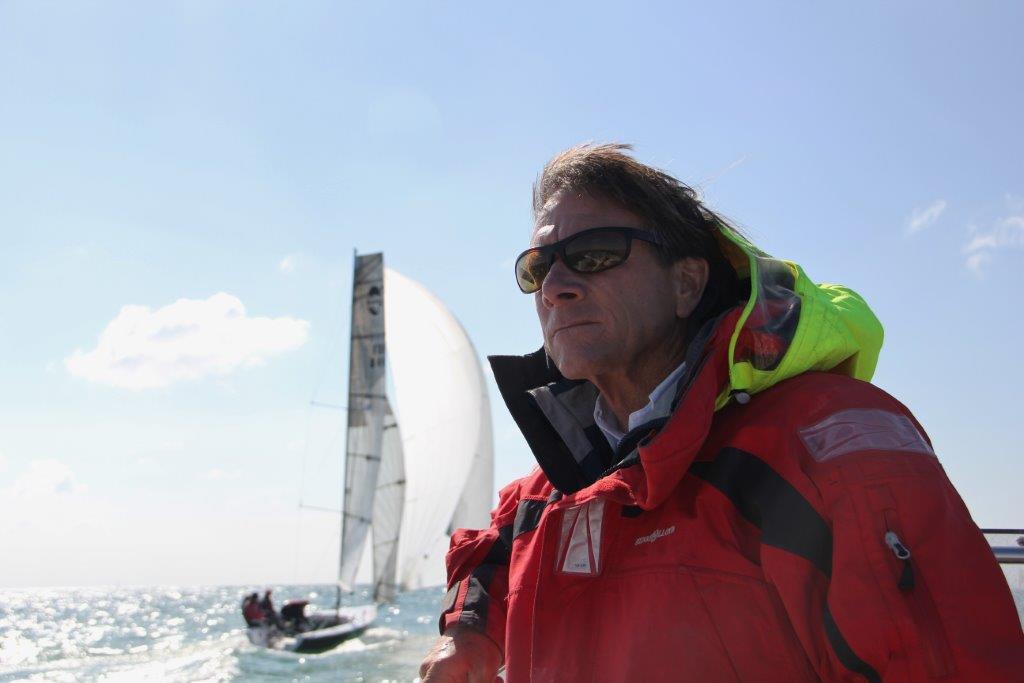
Sail1Design caught up with Ken, and asked many of the same questions we did in our interview with Adam Werblow. Enjoy!
Ken: I have the advantage of reading Adam’s answers first. Though I agree with old friend Adam on many things I will try not to repeat his answers.
What, in your opinion, is the very best thing about our sport?
Nature, variety, and social; the variety of conditions and boats but perhaps more important, anyone can play, then brag or spout excuses at the post-race party. Also, sailing is very social because women can play with and against men and visa-versa.
England “Knights” people. Elton John, Paul McCartney, and of course Ben Ainslie (I mean, Sir Ben Ainslie). If you could “Knight” 3 American sailors, who would they be? Requirements:
- Must be alive
- Must still be actively sailing
The first two are getting on but still sail locally:
Buddy Melges (my fav ambassador of sailing in the US)
Dennis Connor (like him or hate him he was Mr. America’s Cup for a long time)
Jonathan McKee (though he is too humble to want to be called “Sir”)
If you asked for four, the next would be “Dame” Betsy Alison.
Are pro sailors ruining, or saving, One-Design sailing in fleets like the J/70, Etchells, etc?
Neither, they are enjoying it along with the rest of us. Some might say they are enjoying it a bit less since they might feel more pressure to win and increase their pay (or save their job). Then again they’re in it cuz they love it. If one doesn’t like sailing against pros, one choose a class that doesn’t have them. Every class is different and there are hundreds of active classes.
What is your absolute top, favorite, one-design class?
The 505 is the Cadillac of dinghies. So smooth, so fast, so stable (compared to narrower boats). I only wish I had the time and money to sail and race one. Tasars are really cool and simple but unless you are from Seattle you will never know.
Many people say that Pro Football will be gone in 25 years. Where will college sailing be in 25 years? What will it look like?
It looks almost the exact same now as it did 25 years ago except for far more professional coaching. Except for life altering violent injuries, pro football is awesome but new knowledge of concussions will limit the young participants in football. No violence in sailing. It is cerebral, healthy, and fun. Why should it go anywhere? The only threat is the cost of college but it is already ridiculously high and college sailing is thriving.
The America’s Cup is in AC foiling Cats. Good thing, or bad thing? If bad, wh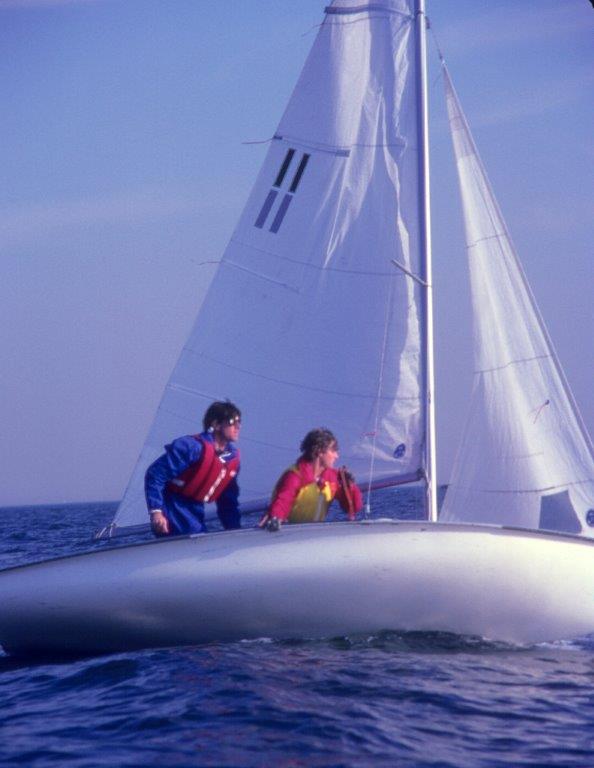
The radical change from behemoth lead mines to foiling cats on short stadium courses is terrible for purists and many old timers but really good for new audiences. I’m for sharing our sport with as many people as possible. Despite being an old-timer myself, I’m loving it. Sunday’s show in Chicago (and New York the month before) was spectacular for aficionados like me or beginners. In short, stadium sailing is cool. It’s tough for competitors with a higher luck factor but they are getting paid so they deal.
Should the sport of sailing continue to try to get on TV? Why or why not?
Not to be redundant (see previous answer) but I think putting sailing on TV is great if the producers can afford what it takes. I’ve always thought if one could put pro football tv production money into sailing then it would be fantastic on tv. Whatever one might think of Larry Ellison (his humongous powerboat once blocked my view of the team racing worlds), his investment into tv sailing has been fantastic. Starting with hiring Stan Honey (the same guy that invented the first down line for football on tv) and bringing the game in close to both shore-side fans and tv fans has been a massive contribution in our sport, allowing millions(?) of new fans to get a glimpse or more of what could be considered an extreme sport (at least in heavy air).
US Optimist Class: Great for the sport, or too much, too soon?
Depends on the kid. For some? Yes, too much too soon. I learned sailing in a very gentle way, on a very old lead mine 30-footer well before dealing with the frustration of losing races or losing control of my dinghy. Starting dinghy racing at age eight can be problematic or it can be a head start in a life-long sport.
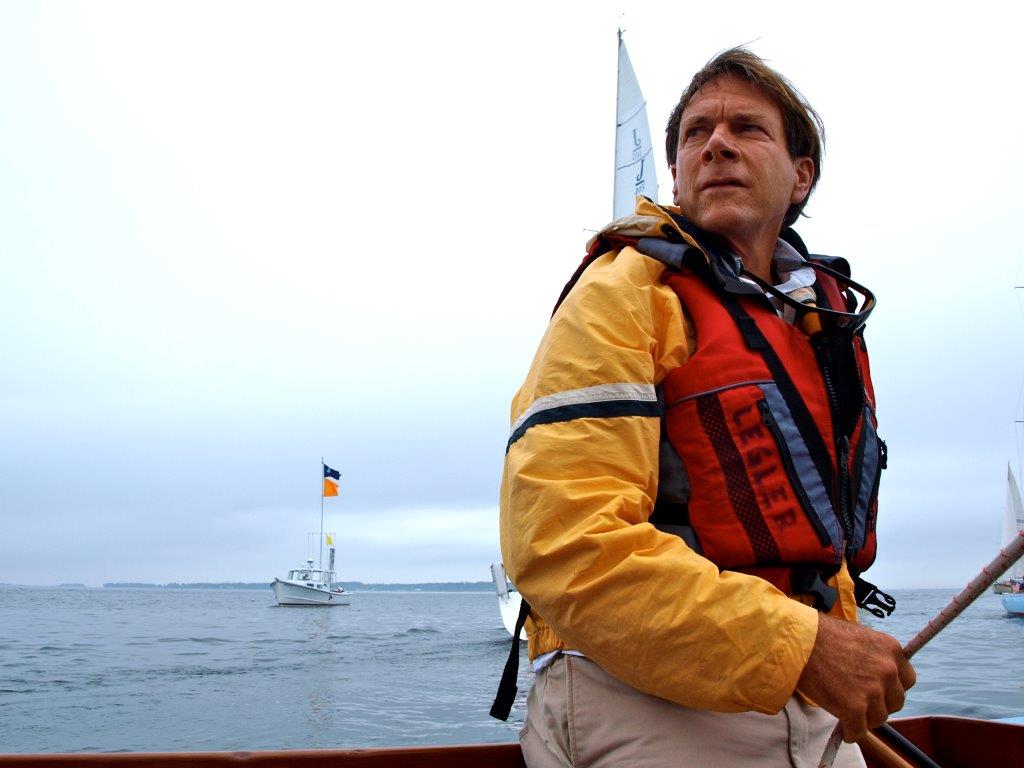
On a scale of 1-10, how would you rate the competency, professionalism, and the overall state of US Sailing Umpires and Judges? Why?
I was against having team racing umpires despite the horrific waste of time in team racing protests. The problem is finding enough volunteer umpires to work all day in ice water. MAISA is doing better than NEISA, they have more umpires for less top teams and events, and slightly better weather. It is, however, for the better to know the immediate result and let umpires do the dirty work rather than undergrad debaters. Back to your original question; I’ll rate our umpires an 8; I’ll rate our judges a 7. That said, there are judges that rate a 10 and others that have, well….poor judgment.
Shouldn’t college sailing be a one-season sport? Why, or why not?
Good question but I think we are far better off with two seasons that get interrupted by bad weather. I watch our other teams at Tufts. Our “single season” lacrosse players practice individually all year. They start with “captain’s practices” shortly after second term begins (indoors), then they go hard core until nationals. We cannot practice individually in the winter nor is it safe even when the pond is not frozen. Further, we want to spread it out so we can back off during academic crunch time.
Overall, what is the weakest thing about college sailing? In other words, where, or in what realm, can the ICSA improve the most?
The boats are too low performance but, they kind of have to be for cost and for harsh conditions. I don’t like FJs overall, especially compared to 420s in an open sea (Yale, Kings Point) or Larks in flat water (Tufts). That said FJs work just fine for close racing in 5-18 knots and they are cheaper to build and cheaper to maintain. It has to be cheap for club teams and we need more teams.
ON COACHING
As a coach, how do you fit in your own personal sailing? If your answer is “I don’t”, then do you miss competing, or does it not bother you?
I compete a tiny bit in the summer and I do miss it but, I get to live sailing vicariously through coaching and photography. I also have a wealth of sailing and racing memories. I sailed every day from teens into my 20s except for dead of winter (weekends only).
College sailing is a sport where women can compete with men, on equal footing. This is rare. Does this affect how you coach?
I like coaching women but it is different. Women are such cooperative listeners. Me: “okay quick team meeting” Women immediately sit in a semi-circle in front of you, then take everything you say literally, so I must be careful with what I say and not exaggerate. Men go right on doing what they were doing knowing I am full of BS anyway.
Women can and will cry once in a while. It’s not the end of the world (unlike when a man cries) but it definitely means something is wrong. And perhaps you should do something about it.
What problems, if any, can this create on a team?
Having an equal amount of women is not a problem; it’s a good thing (see next answer)
What positives, if any, can this create on a team?
Women are a good influence on men (IMHO) and visa-versa. Even socially, when men start talking and acting chauvinistic toward females, as they often do on male only teams, the women on coed teams immediately stop them, be it in the van, on the dock, or at parties. It can still be a problem when there is only one female, such as keel boat teams. I know, I have caught myself joining the men in stupid talk when there are only one or no women around.
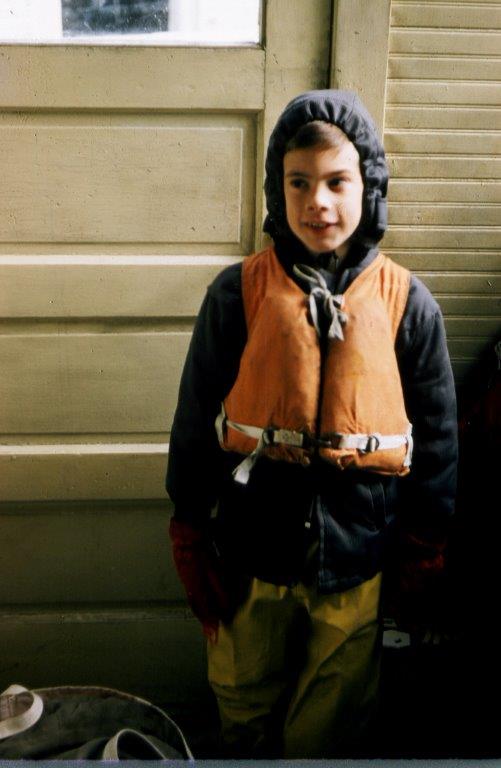
Do you remember the very first time you went sailing? If so, tell us about it.
Sorry, too young to have that in my memory bank. I do remember a 23’ ketch in the driveway named “Petrel” and I remember frostbiting a Dyer Dhow as crew with cold feet. My best early memories are dragging my hands or feet off the leeward rail of the family 30 foot wooden cruiser “Penelope” on windy days off Larchmont.
Why have you been with TUFTS for as long as you have?
(36 years so far, after two at KP and one at Navy and time as player/coach at URI) The health benefits are such that I can’t leave…just kidding. What could be more fun for work but watching college sailing while taking an active role in educating young people that are already way smarter than I am?
Given the new Bacow Pavilion, do you sometimes miss the simplicity of your old cement rectangle, where sailors changed together, boats were crammed in, and the bathrooms were, at best, not great? My point is, was this a more intimate, sailing-focused setting that facilitated team bonding?
You are kidding, right? Team bonding in a cramped, cold, dark, and dusty room? When we got in, students changed as quickly as possible and ran for their lives. Now they put boats away on the ground floor, change in the second floor heated locker room, then move to the third floor classroom for the daily de-brief. I finally get to coach.
When you were young, did you dream about the career you have today?
No but, when I worked at the US Sailing Center on Lake Ontario, I dreamed of managing a sailing center in Newport. Then coaching seemed to be the natural path for someone who sailed every day in college and didn’t study enough. In the meantime, Brad Read got that other dream job at Sail Newport which didn’t open after I got the Tufts job.
Based on your experience in the sailing industry, what advice might you give to those seeking a similar career path?
Well, it will be hard to raise a family on a sailing coach salary but if you marry smart, and stay married, you can do alright financially while working a job that you love.
Profiles in Pro Sailing: Adam Werblow
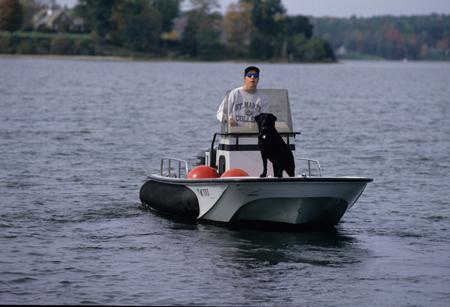
A 1988 graduate of Connecticut College, Werblow was the captain of the sailing team. From 1989-1992, he was a member of the U.S. Sailing Team in the Flying Dutchman class.
Werblow has been the head coach for U.S. Youth Worlds Team eight times and led the team to two gold and two silver medals in 1991, the best record ever at those world championships. In 1999, he was named the Developmental Coach of the Year by the U.S. Sailing’s Olympic Sailing Committee.
Werblow is married to Amy Moore and the couple resides in St. Mary’s City with their two children, Meredith and Michael, and their labrador, Fluke.
What, in your opinion, is the very best thing about our sport?
At the most basic level I love the sea and playing in the wind. Beyond that, as a competitive beast, I enjoy the competition itself and sailing against people who have the same passion for the sea and quest for excellence.
England “Knights” people. Elton John, Paul McCartney, and of course Ben Ainslie (I mean, Sir Ben Ainslie). If you could “Knight” 3 American sailors, who would they be?
- Carl Buchan
- Paul Foerester
- Jonathan McKee
Are pro sailors ruining, or saving, One-Design sailing in fleets like the J/70, Etchells, etc?
Racing against the very best people is fun. The fact that there are people in our sport in a variety of classes who dedicate themselves to elite performance is terrific. But the manner in which “professionals” has developed in our sport has forced me to ask the question. . . “What if Jerry Jones wanted to be the quarterback of the Dallas Cowboys instead of just the owner and general manager?” The obvious answer would be that could never happen because the product on the field would be significantly diminished. Why, therefore, is it ok in competitive sailing for the least talented and experienced person on the boat to be on the helm?
What is your absolute top, favorite, one-design class?
I spent a lot of time racing an FD (Flying Dutchman) and really thought the boat was a performance machine upwind. Learning how to foil is clearly the next calling.
Many people, including players, say that Pro Football will be gone in 25 years. Where will college sailing be in 25 years?
The best thing about College Sailing are the college sailors. Sailors traditionally have a strong belief in the value of education–intellectual curiosity is inherently valuable to success in our sport. The founders of College Sailing wisely recognized the value of higher education yet wanted people to enjoy competing at the highest levels of our sport while they attended college. Our short course format and passion for team racing has made for an intense game that is fun for all involved. In recent years, college sailing has become better funded, more competitive and yet, the essential core mission remains the same–study first and sail next.
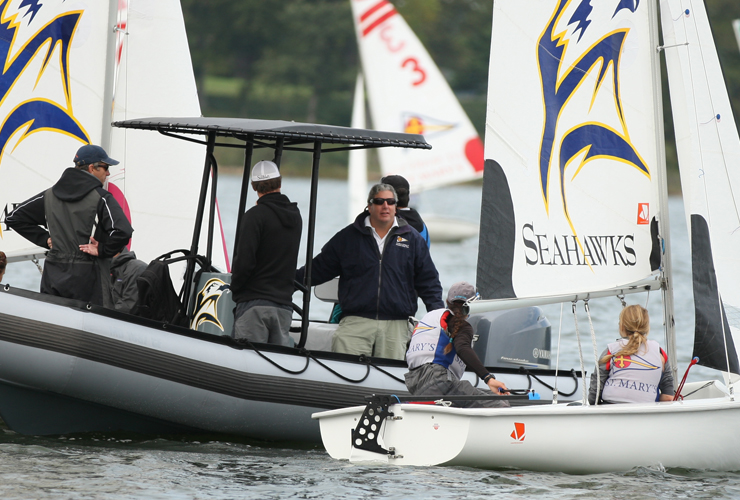
There are a lot of intelligent, passionate people who work hard to promote and sail for the Cup. I do not feel qualified to answer that question.
Should the sport of sailing continue to try to get on TV? Why or why not?
I think given new technologies with tracking and drones, when edited, sailing can have some broader appeal. Additionally, there are about a million channels for every niche out there–why not sailing?
US Optimist Class: Great for the sport, or too much, too soon?
My children are about to enter the Opti circuit so give me a few years before I can give an educated answer. I learned to sail on a terrible boat that was really hard to keep out of irons–the Dyer Dhow. I am hopeful the Opti will be a better performer and my children will fall in love with our sport.
ON COLLEGE SAILING
On a scale of 1-10, how would you rate the competency, professionalism, and the overall state of US Sailing Umpires and Judges? Why?
I am very pleased with the caliber of the umpires we get in at our top level team races in MAISA. We have a committed group of people who love the game of team racing and commit thousands of hours to help make the game fair. I believe we are lucky to have them and don’t thank them enough.
Overall, what is the weakest thing about college sailing? In other words, where, or in what realm, can the ICSA improve the most?
I would like to see College Sailing re-align the seven conferences to make for more efficient travel. We are too tied to the traditional regions and should instead look at where the specific colleges and universities are located and make leagues based off that data.
ON COACHING
As a coach, how do you fit in your own personal sailing? If your answer is “I don’t”, then do you miss competing, or does it not bother you?
It is a tricky thing. . . I spend most of my time helping others to be prepared to race. I have not, therefore, found it terribly much fun to go race completely unprepared. I am, however, looking forward to sharing sailing with my family this summer.
College sailing is a sport where women can compete with men, on equal footing. This is rare. Does this affect how you coach?
We try to help each sailor to push themselves to new heights–skipper, crew, male, female. Whatever the skills of the individual, we hope to help them to turn their weaknesses into strengths and their strengths into weapons. The only real difference for us is that some members of the team can compete in women’s only events and some can’t.
What problems, if any, can this create on a team?
Because women have the opportunity to compete on two different circuits (women’s and coed); sometimes it is difficult to give outstanding sailors who are women enough time off.
What positives, if any, can this create on a team?
People are recognized for their skill.
PERSONAL STUFF
Do you remember the very first time you went sailing? If so, tell us about it.
I was fortunate enough that my father taught me how to sail and together my parents provided the amazing opportunity for me to grow up sailing with my friends at Larchmont YC (Long Island Sound). People with whom I am still exceptionally close today.
Why have you been with St. Mary’s for as long as you have?
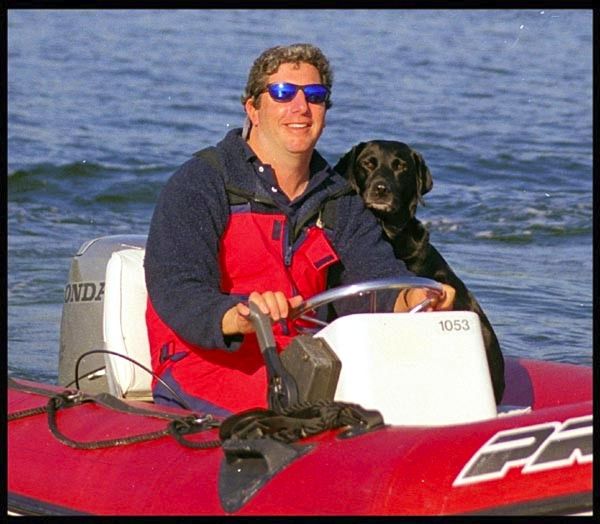
Based on your experience in the sailing industry, what advice might you give to those seeking a similar career path?
I believe College Sailing was the best game in the world. For those who want to help student-athletes achieve, it is the greatest job in the world.
2016 505 North American Championship Results
Bellingham Yacht Club
The final day of racing again saw mostly clear skies, but a little more finicky wind. We were able to get in one long race today with winds of 6-8 knots easing in the last half of the race. With this race, the total count for the regatta was 10 races which gave the competitors another throw out. Interestingly, the additional throw out did not change the positions of the top 5 sailors from yesterday. Congratulations to Riley Gibbs and Reeve Dunne for a well sailed regatta to capture first place and become the 2016 North American Champions.
The organizing committee would like to extend our sincere thank you to the sponsors for all of their support, to the race committee for their hard work in providing fair, challenging races, to Mike Allsop for hosting the spectators on his yacht La Siesta, to all of the many volunteers who helped in a myriad of capacities to make this regatta a success, to the judges who donate their time and expenses to ensure the racing is fair, and most of all, to the competitors for making their way to Bellingham to race in our beautiful venue. We hope to be hosts to the 505 fleet for more of these events.
TOP 25:
For all of the final results, click on the link below.
505 Fleet Results
ICSA Coed National Championship Report & Results
San Deigo, CA By Tyler Colvin
Coming off a wild weekend at the Laser Performance Team Race Nationals, spirits and expectations were high for the start of the Gill Coed National Championship in San Diego, hosted by San Diego Yacht Club. In the same format as Women’s Nationals, Coed nationals are 2 days of qualifying and 2 days of finals; the top 9 teams from each of the two divisions moving on to the finals.
After a wind delay on the first day of semi finals, racing began in a light and lumpy 5-10 knot westerly. The May Grey was in hard in southern California and consistency was difficult for all but a handful of boats in the light, shifty conditions.
At the conclusion of Day 1 in the Eastern Semifinals, perennial MAISA powers Old Dominion and St Mary’s sat atop the leaderboard, accompanied by dark horse South Florida. In the Western Semifinal, Coast Guard and Women’s College Sailor of the Year, Nikole Barnes led Georgetown and George Washington Universities.
Day 2 of the Semifinals saw similar light winds but from the southwest around 5-10 knots. It was difficult to get races off in the conditions, and only six more races were completed for a total of 12 in each fleet. Qualifying from the Eastern Semifinals were Old Dominion, St Mary’s, Navy, BC, Stanford, Yale, USF, BU and Fordham. In the Western Semifinals, CGA dominated over Georgetown, Charleston, Brown, RWU, Conn, Hobart and William Smith, George Washington and U Penn.
The Coed Finals got underway June 2nd. A welcome change from the previous few days, the marine layer burned off and the pier warmed up to the low 70s, a little more Southern California-like than the earlier June Gloom. Racing was underway on time at 10:30am in 6-10 knots of choppy, shifty races. The wind was up and down, often with hiking conditions at the top of the course and drifting at the leeward gate.
Mid afternoon, the current started picking up which caused for some interesting mark rounding situations in the light air. With all of the challenges on the course, leads were exchanged often depending on who could find pressure. Consistency was the name of the game, and Yale was able to minimize double digit finishes, coming out on top after 10 races at the end of the day.
Day 2 opened with Yale leading Georgetown, BC, CGA, USF, ODU, Stanford, Navy and Brown in the standings. The goal of 18 total races for the regatta was well within sight after completing 10 on day 1. Long shifts and pressure discrepancies on the course again made for challenging racing. The top 4 teams of Georgetown, CGA, Yale and BC traded firsts for last place finishes as the battle for the top was a brutal one.
The wind steadily dropped off throughout the afternoon and tensions rose. Going into the final rotation, BC sat in 4th with 242 points, 5 points out of a podium spot behind a resurgent CGA Bears (237 points), and still in the hunt for the top with Yale (227 points) and Georgetown (224 points). In true Yale fashion, A division skipper Ian Barrows turned in 3 straight bullets in races 14, 15, 16 to keep his team in the hunt. Flashes of Jane Macky in 2009.
Drama was the special of the day as the entire regatta came down to the last race. In 18A, Georgetown’s Nevin Snow, College Sailor of the Year, was bullied to the back of the fleet and into last place; their once 18 point lead was down to 7 points. Second place was a 3-way tie between BC, Yale and CGA, all with 261 points.
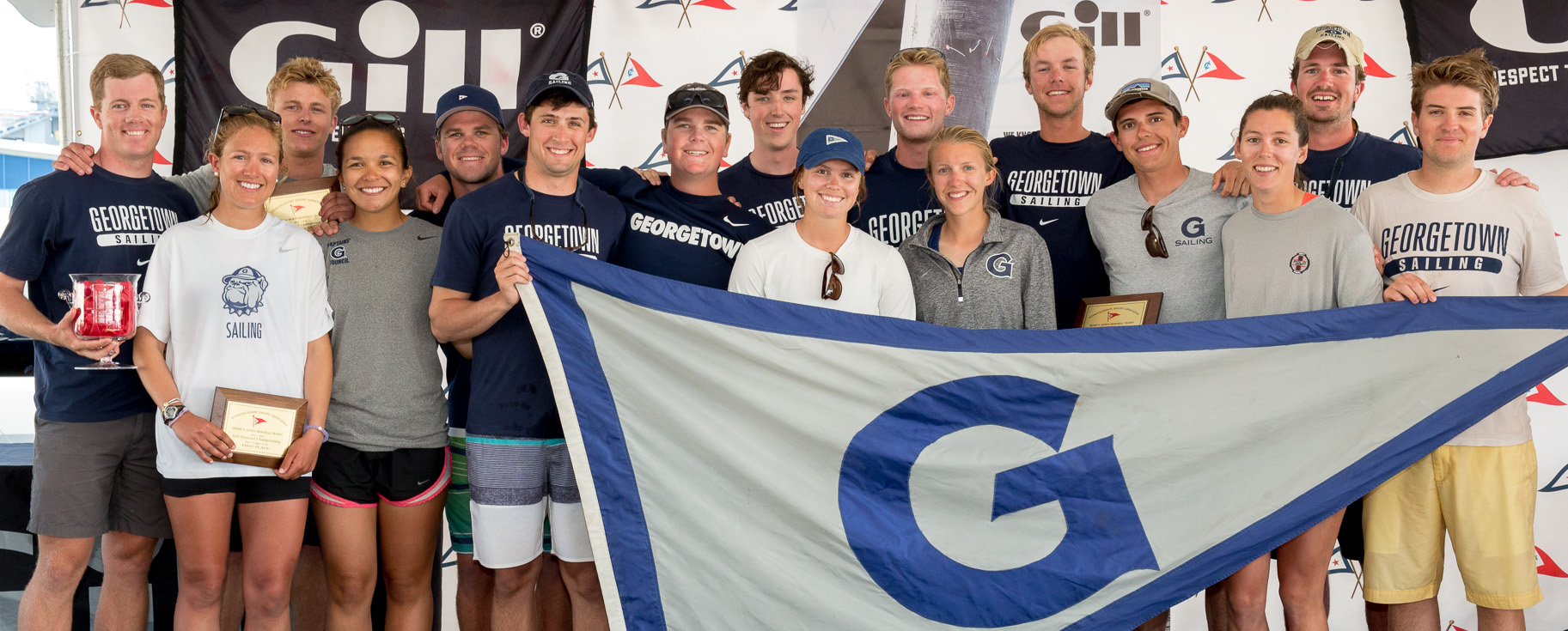
Congratulations to the Georgetown Hoyas and coach Mike Callahan on a hard-fought championship!


